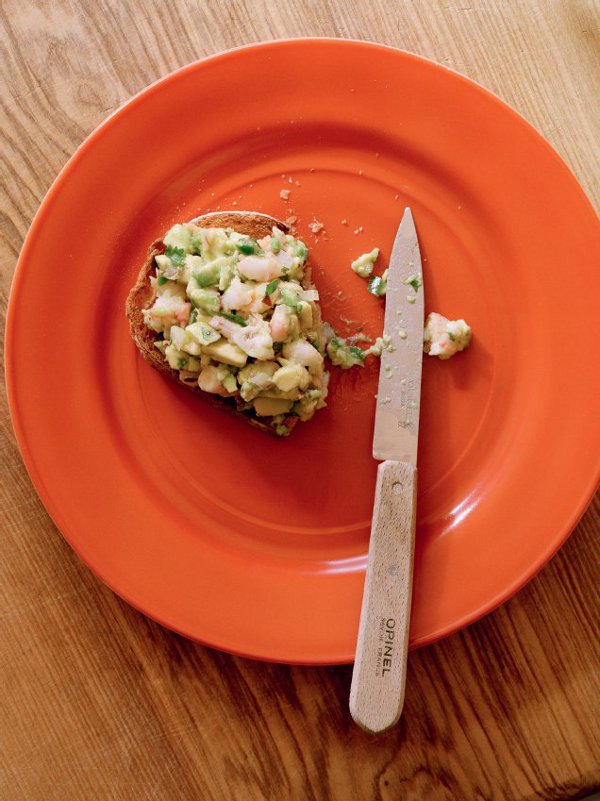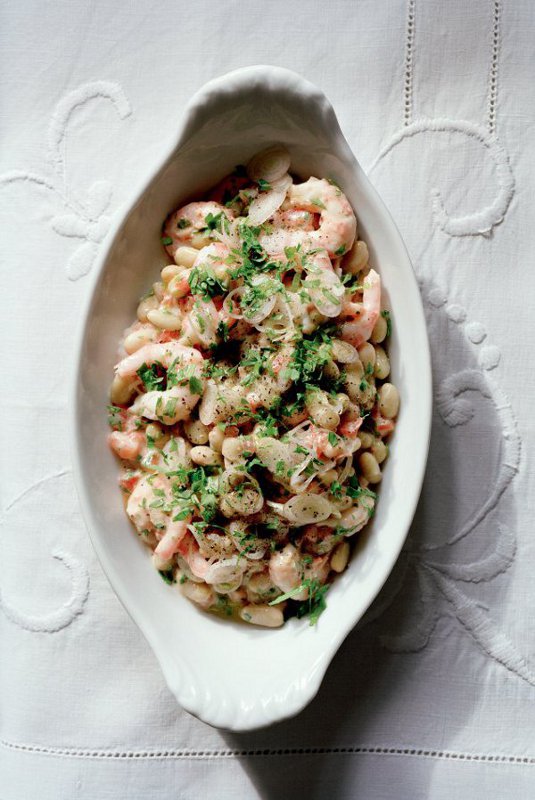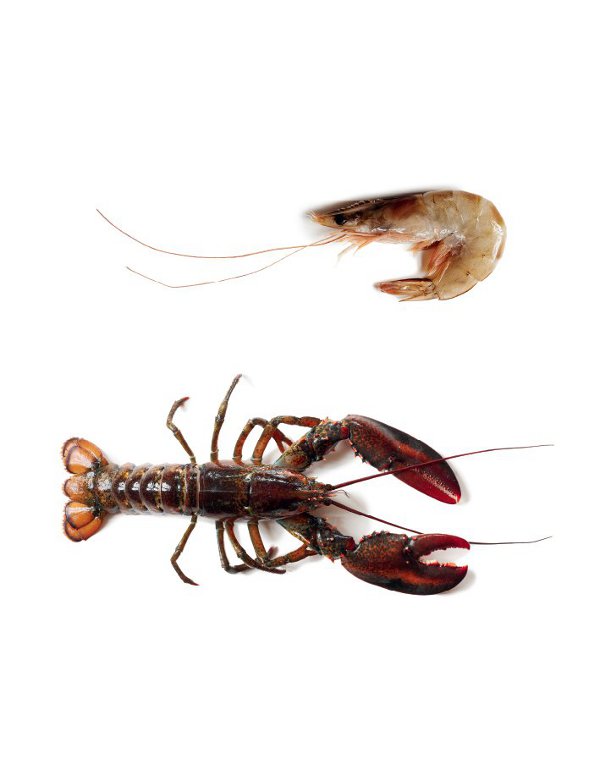Good Cook (17 page)
Authors: Simon Hopkinson

serves 2
2–3 oven-ready teal or Cornish hens, according to size
a little oil
salt and freshly ground black pepper
2 tbsp port
1 tbsp Cognac
7 oz chicken stock
1 tsp red wine vinegar
1 tbsp marmalade—the more orange-tasting the better
the juice and grated zest of 1 small orange
1 tsp potato flour, or arrowroot, slaked with very little water, or port
fresh orange segments, for decoration
A teal is the smallest of the wild duck family, as far as I know. A widgeon is slightly bigger, followed by the largest, the mallard, with the latter being the most common of all edible water fowls. All three are an acquired taste, in terms both of the faintest of fishy flavors and the fact that they can, occasionally, not be the most tender of birds. That said, a depth of flavor, together with a density of texture, makes them, for me, a seasonal and gamey treat. Teal can slightly vary in size, hence the suggestion (see above) that maybe three teal to serve two might be a generous option.
Preheat the oven to 425°F.
Rub the teal with a smear of oil, then season them well. In a small and solid roasting pan (or heavy-based frying pan), cook them on the top shelf of the oven for 10 minutes, undisturbed. Remove and leave to rest for at least a further 10–15 minutes, or until cool enough to handle. As directed in the foregoing roast duck recipe (see
page 190
), remove the breast and leg/thigh parts from the teal so that you have 4 or 6 halves, and put to one side. Keep the oven on.
Roughly chop up the carcasses and return to the roasting pan. On a moderate heat, stir these around until well crusted and also mixing with any bits that have stuck to the bottom of the pan. Add the port and Cognac and ignite them. Once the flames have died down, pour in the chicken stock and vinegar, then spoon in the
marmalade. Add the orange juice and zest, stir everything together and allow to simmer for at least 30 minutes; if you wish, you could do this in the oven. You are, in effect, making teal gravy flavored with orange, here.
Once you are happy with the flavor, strain this mess through a fine sieve into a small saucepan. Check for seasoning and then lightly thicken the gravy with the slaked potato flour (or arrowroot) until of a coating consistency, but take care not to over-thicken. Keep warm.
Return the teal halves to the roasting pan and put back into the oven. Reheat for no more than 5 minutes or so, once again, on the top shelf; they need to be pink. Once hot, place on 2 hot plates and spoon over the sauce. Garnish with the orange segments (the orange skin and pith removed with a small knife, then each segment cut and eased out from between the inner membrane) and serve forthwith. Very good indeed, accompanied by a purée of well-buttered celeriac root.

serves 4, for a sweet little Sunday supper
2 tbsp butter
a good scraping of nutmeg
pinch of ground mace
2 tbsp Irish whisky, Jameson’s preferably
1 scant tsp anchovy essence (see
page 120
)
5 ox double or heavy cream
½ lb peeled brown (or other) shrimps
4 slices of bread, taken from a plain white loaf
squeeze of lemon juice
1 tbsp finely chopped parsley
cayenne pepper
The “Irish” in the name, here, simply refers to the whisky. However, I could easily envisage eating something like this in a cozy bar on the Galway coast, preceded, perhaps, by a plate of their excellent native oysters. Irish whisky, furthermore, is the only one that I enjoy; Scotch is too assertive for this Sassenach, and I particularly avoid a malt—however legendary its provenance or age. An occasional glass of Jameson’s, however, is one that I love.
Note: it is now relatively easy to purchase packages of freshly peeled shrimps from good fishmongers, delicatessens and occasional supermarkets.
Using a small saucepan, melt the butter and add the spices and Irish whisky. Bring up to a simmer and ignite the mixture; there will be a small flame and, as you swirl the pan around, it will soon be extinguished. Now introduce the anchovy essence, allow to bubble for a few seconds and then stir in the cream. Bring up to a simmer and allow to thicken slightly and reduce. Tip in the shrimps, thoroughly heat through but do not overcook; the shrimps should be nicely coated with the sauce. Keep warm. To make the buttered toast, take four slices of white, crustless bread and thinly butter on both sides. Place under a broiler and toast on both sides until crisp and golden.
Finally, stir a little lemon juice and the parsley into the creamed shrimps, pile them on the toast and lightly dust each serving with cayenne pepper.
serves 2, as a luxury snack
Not so much a recipe as a thoroughly delicious assembly. I was, in fact, inspired to put these harmonious ingredients together by the man who snapped its pretty picture—and all the others, naturally, in this book—Mr. Jason Lowe. He was wistfully relating to me how he used to make himself chopped avocado on toast (spread with Marmite as well!) as a fifteen-year-old teenager, the fruit picked from a tree which grew outside his study window at the school he attended in Zimbabwe. And what an endearing picture is evoked here.
This is the kind of toast topping that, frankly, does not need a list of measured ingredients; I certainly didn’t weigh anything when I made it the first time. Simply take a fine, ripe
avocado
, peel it, and cut it into chunks. Place these in a bowl, squeeze over some
lime juice
(or lemon, if you have no lime to hand), and add a little
salt
. Now take a handful of some of those
cooked, shell-on prawns
, peel them and add to the avocado. Roughly slice a small green
jalapeño chilli
(some do, occasionally, turn red), seeds removed if you must, and also add to the avocado and prawns. Mix all well, tip out on to a board and strew over the mixture the leaves from a few sprigs of
coriander
. Take a heavy knife and chop all the ingredients together until a coarse purée; try to resist doing this in a processor, for it will become too smooth, especially the avocado. Return the mixture to the bowl, lubricate with a tiny trickle of
olive oil
, check for salt and more citrus juice, if needed, then pile on to a large slice of toasted rustic
bread
—sourdough, say—and spread thickly. Eat at once, cut into thick soldiers for ease of eating. Previously spread the toast with Marmite only if you are an addict …


serves 4, for a summery lunch out of doors
1¾ lb shell-on prawns, defrosted
2 tbsp tomato passata (or purée)
1 tbsp red wine vinegar
1 small clove of garlic, crushed
salt and freshly ground black pepper
3–4 oz extra virgin olive oil
1¼–½ lb cooked flageolet beans (or other kidney beans), drained weight, well rinsed
2 small tomatoes, peeled, seeded and finely chopped
1 medium red onion, very thinly sliced
3 tbsp chopped parsley
a little extra olive oil
Cooked, shell-on prawns are the ones to use here. These are available from most supermarkets and have been frozen, but the quality is good nonetheless. The contrast of the pale green beans together with the pink prawns is, I think, a winning collation.
Peel the prawns and remove their heads. Put the tail meat into a bowl and set aside. Using a small processor or blender, combine together the passata, vinegar, garlic and seasoning. Then, with the motor running slowly, start to incorporate the olive oil until creamy and homogenized; if it looks too thick, add a splash of warm water. Tip into a shallow pan, check for seasoning and piquancy, then add the beans and chopped tomatoes. Carefully stir together and warm through over a low heat.
Decant into a shallow serving dish, arrange the prawns and red onion on top, then liberally scatter with the parsley. Trickle over some extra oil and quietly mingle all the components together. Serve just as it is, with slices of grilled country bread.
serves a couple of addictive,
hard-working gourmets
1¼ lb cooked lobster, split in half lengthways, tail part thickly sliced, claw meat left in one piece
for the sauce
4 tbsp butter
1 tbsp olive oil
1 small onion, peeled and finely chopped
1 clove of garlic, crushed
1 small carrot, peeled and finely chopped
¼ of a small fennel bulb, finely chopped
shell debris from the cooked lobster, roughly chopped
salt and freshly ground black pepper
1 scant tbsp tomato purée
generous splash of Cognac
generous splash of port
1 small glass of dry white wine
2 sprigs of fresh tarragon, chopped
9 oz double or heavy cream
a small squeeze of lemon juice, to taste
1 egg yolk
Although the eating of this particular dish is quite sublime, the making of it needs attention and not a little boisterous enthusiasm. Personally, and when in the mood, I love to make this kind of rich little shellfish number, but I understand that its origins lie in the professional kitchen, where much simmering of chopped lobster carcasses, flaming of Cognac and all that passing and pressing through sieves is needed simply to fashion the sauce. In essence, this is a dish you feel you really want to make, rather than merely thinking about it. So, if that particular need is manifesting itself, go ahead. However, if it all seems a bit too much trouble, then please choose to make something else. Cooking a dish like this, after all, ought to be a pleasure.
Note: if bothered by dealing with the lobster, ask a fishmonger to do it. All body and claw meat needs to be removed, and also ask him to discard the stomach sac, which lies in the head, as well as the thin intestinal tract.
To make the sauce, heat together the butter and olive oil and in it stew the vegetables until softened. Add the lobster debris, seasoning and tomato purée and stir in. Cook gently, stirring frequently, for a few minutes more, or until the tomato
purée has turned rust-colored. Add the Cognac and port (ignite them if you wish), white wine and tarragon and bring to a simmer. Remove any froth that has been generated with occasional dabs from a paper towel and then introduce the cream. Simmer very quietly for at least 30–40 minutes, then strain through a coarse sieve suspended over a clean pan, pressing down on the collected debris as much as you can with the back of a ladle, so forcing as much flavor through the sieve to collect below. Return this (now) sauce to a moderate heat and return to a simmer.
Preheat the oven to 425°F.
As soon as the inevitable scum reappears once more on the surface, deftly remove it with a spoon. Allow to reduce and thicken before correcting the seasoning and adding a touch of lemon juice to taste. Finally, pass it through a very fine sieve and put to one side; its consistency should be that of double cream and it should taste richly of shellfish. Finally, add the egg yolk and thoroughly beat in until smooth.
Note: with regard to the addition of an egg yolk … In restaurant kitchens, there is almost always hollandaise sauce lurking about somewhere and I have, in the past, used a little of that sauce in place of the egg yolk. If you were making this dish for a dinner party, say, then it would be well worth making some (see Smoked Haddock and Spinach, with Chive Butter Sauce,
page 107
); it offers an even more voluptuous finish to the sauce. Otherwise, stick with the simpler egg yolk.
To finish the dish, take 2 small ovenproof dishes, lightly butter them and lay in the lobster meat. Spoon over the sauce generously and slide the dishes on to the top shelf of the oven. Heat through for about 10 minutes, until the surface of the dishes has lightly burnished (put them under a hot broiler for a finishing touch, if necessary). Serve at once, perhaps with some pilau rice.

